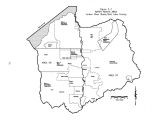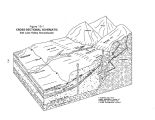| OCR Text |
Show The northern Utah region is considered a high seismic risk area. The region has numerous active faults that have been relatively quiet in recent geologic time. The last major seismic event in northern Utah occurred in 1962 in Cache Valley. It has been estimated the last significant seismic event in the Jordan River Basin was more than 1,000 years ago. Although we are still unable to accurately predict earthquake activity, a study of the frequency of quakes for this region suggests a rather large seismic event ( up to 7.0 on the Richter Scale) could be expected in the future. Recent studies of earthquake preparedness along the Wasatch Front have shown local building codes inadequately address the potential for ground- shaking, and predict extensive property damage and loss of life in a major event. The basin's reservoirs, however, have been designed to withstand the shaking produced by a 7.0 earthquake and are expected to maintain their integrity despite sustaining some damage in such an event. It is likely that in the event of a major earthquake, localized flooding will occur because of ruptured canals and aqueducts. 13.3 Organizations and Regulations 13.3.1 Local As a result of flooding in 1952, the Utah Legislature passed a law giving counties the responsibility for flood control operations. This responsibility was expanded in 1961 with the ability to levy taxes for flood control operations, bond for capital flood control improvements, and to establish special flood control districts. Salt Lake County Flood Control, a division of the Salt Lake County Public Works Department, has rights- of- way or clear title over most of the major streams within the county. Local cities and towns are responsible for planning and controlling runoff within city limits and outside of the county flood control's right- of- way. Their efforts, however, must comply with the county's flood control criteria. 13.3.2 State The Division of Comprehensive Emergency Management ( CEM), a division of the Department of Public Safety, is responsible for generating interest and developing emergency response and management plans. Under direction of CEM, towns, cities and counties prepare emergency response and management plans that are comprehensive in scope but allow for effective and close cooperation with state and federal agencies in the event of a major disaster beyond local capabilities. CEM also works closely with other state and federal agencies to assure needed manpower, equipment, materials and supplies reach the disaster areas. The initial response to a natural disaster is the responsibility of the impacted city or county. Other agencies involved after the initial response and in the long- term management of a natural disaster have the responsibility to work within established procedural guidelines and organizational structures. These guidelines have been developed to assure needed help and assistance is rendered in a timely and effective manner. Other agencies and officials involved in emergency response include the Governor's Office and the heads of all state divisions and departments. 13.3.3 Federal The federal government provides assistance in disaster response, recovery, preparedness and mitigation through the Federal Emergency Management Agency ( FEMA). Following a natural disaster, FEMA assistance commences with a Presidential Declaration of Disaster. The presidential disaster declaration generally follows a request from the governor for federal assistance. A federal disaster declaration provides the state with financial assistance from the federal government, along with FEMA personnel experienced in handling various aspects of disaster response, recovery and mitigation. The Federal Response Plan ( FRP) is set up to provide technical assistance in the following 12 emergency support functions: transportation, communications, public works and engineering, fire fighting, damage information, mass care, resources, health and medical services, urban search and rescue, hazardous materials, food, and energy. One of the overriding principles in the FRP puts state and local leadership in charge while FEMA personnel fulfil a supporting role. 13.4 Flooding Problems Because flows are regulated at the outlet from Utah Lake, flooding has not been a significant problem along the main stem of the Jordan River. Recent history, however, has given Salt Lake County residents cause for alarm along several of the Jordan River's tributaries. Record snowpack and spring 13- 2 |

















































































































































































